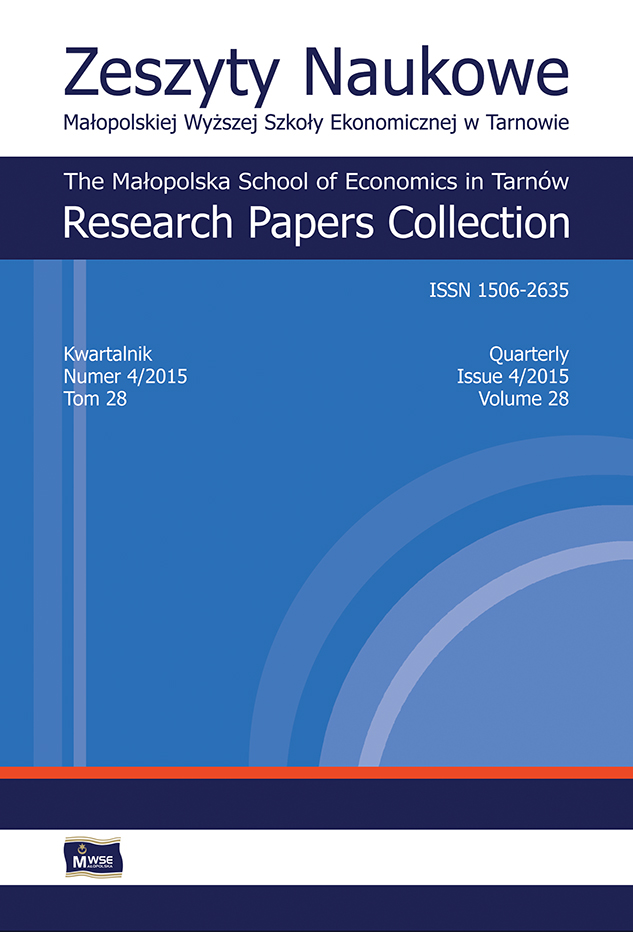Abstract
The aim of the article, in a cognitive dimension, is to provide a general recognition of the tourist motivation theory and the theory of travel motivating factors in the form of tourist motivation factors trichotomy concept. The main objective of the paper, in terms of methodology, is to identify the directions and use of this concept in the management proces by creating customer value in the regional tourism economy―Customer Value Analysis (CVA), as well as in the analysis of social networks―Social Network Analysis (SNA). By using the concept of tourism motivation factors trichotomy, the demand creation and the development of a tourist product (supply) is described precisely. Also, appropriately selected results of empirical research that allow to illustrate these relationships are presented. The development of CVA method, by supplementing it with the concept of motivation factors trichotomy, formed a new model of tools, through which the main factors were identified and grouped into: motivators that cause desire and willingness to take tourist activity as well as the hygiene factors the lack of which causes reluctance to participation in tourism. Also the demotivating factors (demotivators) that cause a negative attitude towards tourism activity in a given tourist area (destination) were identified. It was assumed that these studies results constitute an important factor, which determines the structure of networks organized for the purpose of shaping and designing of tourist destinations. The identified categories of motivation, value and behaviour factors make, next to operational ties, the basis to construct a regional tourism platform for dialogue and cooperation. Adapting the aforementioned approach which integrates CVA, SNA tools and the concept of motivation factors trichotomy to the ground of travel industry, the research can contribute to the creation of organizational partnership that brings benefits for companies operating in the tourist market and at the same time it will lead to raising the competitive position of destinations.
References
Ahlström-Södeling, R. (2003). SME strategic business network seen as learning organization. Journal of Small Business and Enterprise Development, 10(4), 444‒454.
View in Google Scholar
Armstrong, M. (2000). Zarządzanie zasobami ludzkimi. Transl. by A. Unterschuetz et al. Kraków: Wydawnictwo Profesjonalnej Szkoły Biznesu. ISBN 8385441867.
View in Google Scholar
Borodako, K. (2012). Współpraca sieciowa partnerów turystyki miejskiej na przykładzie Krakowa. In: T. Żabińska (ed.). Turystyka na obszarach miejskich. Uwarunkowania rozwoju. Narzędzia promocji (pp. 60‒71). Katowice: Wydawnictwo Uniwersytetu Ekonomicznego w Katowicach. ISBN 9788378750475.
View in Google Scholar
Crompton, J. L. (1979). Why people go on pleasure vacation. Annals of Tourism Research, 6 (4), 415‒416.
View in Google Scholar
Herzberg, F. (1987). One more time: How do you motivate employees? Harvard Business Review, 65(5), 109‒120.
View in Google Scholar
Iwasiewicz, A. (2000). Metody statystyczne zarządzania jakością [online, accessed: 2015-07-10]. Stat Soft Polska. Retreived from: http://www.statsoft.pl.
View in Google Scholar
Kocowski, T. (1982). Potrzeby człowieka. Koncepcja systemowa. Wrocław: Ossolineum. ISBN 8304009684.
View in Google Scholar
Kozioł, L., Pyrek, R. (2014). The concept of classification of tourist product: Some observations and a research agenda. In: V. Katsoni (ed.). Cultural tourism in a digital era (pp. 57–66). Athens: Springer International Publishing. ISBN 9783319158594.
View in Google Scholar
MOT. (2014). Ruch turystyczny w Krakowie. Kraków: Małopolska Organizacja Turystyczna. ISSN 22992863 (print); ISSN 22992871 (online).
View in Google Scholar
Nooy de W., Mirvar, A., Batagelj, V. (2005). Exploratory social network analysis with Pajek. Cambridge: Cambridge University Press. ISBN 9780521174800.
View in Google Scholar
Powell, R., Kokkranikal, J. (2015). Motivations and experiences of museum visitors: The case of the Imperial War Museum, United Kingdom. In: V. Katsoni (ed.). Cultural tourism in a digital era (pp. 169–181). Athens: Springer International Publishing. ISBN 9783319158594.
View in Google Scholar
Reykowski, J. (1975). Teoria motywacji a zarządzanie. Warszawa: Polskie Wydawnictwo Ekonomiczne.
View in Google Scholar
Rheinberg, F. (2006). Psychologia motywacji. Kraków: WAM. ISBN 8373186409.
View in Google Scholar
Winiarski, R., Zdebski, J. (2008). Psychologia turystyki. Warszawa: Wydawnictwa Akademickie i Profesjonalne. ISBN 9788360501085.
View in Google Scholar
© Copyright by Małopolska School of Economics in Tarnów. The articles are available under the Creative Commons Attribution NonCommercial-NoDerivatives 4.0 International License


